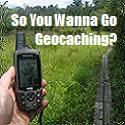GPS Marks the Spot: Geocaching Houston
Face it. You've been wanting to go treasure hunting ever since you saw the Goonies chasing One-eyed Willy's loot and running from the Fratelli's. Don't lie or we'll make you do the truffle shuffle.Lucky for you thousands of objects are hidden around the greater Houston area just waiting for you to find them. All you need is a hand-held GPS receiver (less than $100) and a bit of creative thinking (priceless). The game is called geocaching and everybody's doing it for lots of different reasons like it's a great way to explore the city and sometimes you can win a Jeep.
Geocaching started in 2000 after the the US government made available data from the Global Positioning System (GPS). The roll-back of selective availability made it possible for civilian GPS users to increase accuracy ten fold. Dave Ulmer, a computer scientist from Oregon, placed the first geocache (a waterproof container containing a log book and some giveaways), recorded the GPS coordinates and sent them to a GPS user group. Within three days two GPS users had found the cache.
The popularity of Geocaching has snowballed during the ensuing six years. Caches have been hidden on six of the seven continents; only the Arctic is not represented. So, don't forget to bring your GPS next time you're in Antarctica. There are currently 17 caches down below including one named Cone_Z that requires a helicopter for access resulting in only three folks finding it in just over two years.
Those of you lacking a helicopter are in luck. Roughly 2200 caches have been placed in the Houston area dating back to February 2001 when the first cache, appropriately titled Houston's First, was placed near the Johnson Space Center. Don't worry about getting busted for trespassing unlike when you're out cow tipping in College Station. All caches must be placed in publicly accessible areas like T.C. Jester park, Braes Bayou and downtown. But, that doesn't mean it's as easy as walking up and eyeballing the cache from 50 feet away.
Caches range in size from five gallon buckets to old ammo cans to empty chapsticks. The containers are hidden in such a way that non-participants (called muggles; yeah, like in Harry Potter; yeah, you should stop snickering) don't happen upon them and run off with the loot.
The loot typically consists of some sort of log, so that you can let folks know you found it, and whatever stuff the hider can stuff into the container. Five gallon bucket sized hides may yield something fancy while a film container may only contain small trinkets or maybe some foreign money. Finders may take an item from the cache, but must leave something in trade.
Sometimes folks place a trackable object, called a travel bug, into the cache. These items are tagged with a serial number that the finder enters on the website to record the location before placing the item in a different cache. The objects have a mission, like returning a hula dancer to Hawaii or a Randy Johnson figurine traveling the MLB ballpark circuit.
Sounds like more fun than a barrel of monkeys; don't it? Go pick up a GPS, or unleash the capability in your cell phone, and get started. And, let us know if you get a line on a helicopter.








No comments:
Post a Comment